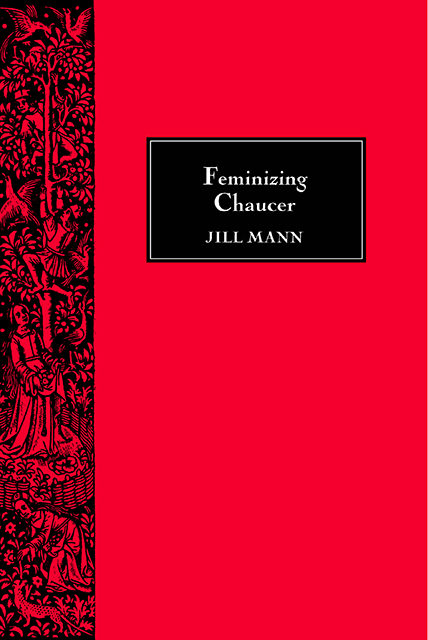Book contents
- Frontmatter
- Contents
- Dedication
- Preface to the 2002 Edition
- Preface
- Abbreviations
- Introduction
- 1 Women and Betrayal
- 2 Antifeminism
- 3 The Surrender of Maistrye
- 4 Suffering Woman, Suffering God
- 5 The Feminized Hero
- Conclusion
- Excursus: Wife-Swapping in Medieval Literature
- Chaucer Studies
- Bibliography
- Index
Preface to the 2002 Edition
Published online by Cambridge University Press: 17 March 2023
- Frontmatter
- Contents
- Dedication
- Preface to the 2002 Edition
- Preface
- Abbreviations
- Introduction
- 1 Women and Betrayal
- 2 Antifeminism
- 3 The Surrender of Maistrye
- 4 Suffering Woman, Suffering God
- 5 The Feminized Hero
- Conclusion
- Excursus: Wife-Swapping in Medieval Literature
- Chaucer Studies
- Bibliography
- Index
Summary
Feminizing Chaucer is a revised edition of the volume entitled Geoffrey Chaucer in the Harvester-Wheatsheaf Feminist Readings series, published in 1991. Since the nature of the book is no longer defined by the series in which it originally appeared, it has been re-christened with a title that reflects its contents and approach more directly. The new title has – as I suppose is readily apparent – a dual significance. In the first place, it signals that the book interprets Chaucer's work from a feminist standpoint, and in the light of modern feminist writings. Secondly, it aims to show that the ethos that pervades Chaucer's work is a ‘feminized’ one – that women are central to his imaginative vision and his explorations of ethical and religious problems. The central substance of this book remains unchanged since 1991, but it has been updated by means of additional references, footnotes, and bibliography, and a new Excursus on ‘Wife-Swapping in Medieval Literature’, which extends the discussion of the Franklin's Tale, has been added. In this Preface, I shall try to sketch some of the developments in Chaucerian gender studies over the last ten years, and to re-situate my own study in relation to them.
At the end of the 1980s, feminist criticism seemed rather thin on the ground. True, exploration of gender stereotypes played a significant role in the work of David Aers and Sheila Delany, but both these critics aligned themselves primarily with the tradition of Marxist criticism rather than with feminism tout court. Despite a number of pioneering articles by (among others) Mary Carruthers (1979), Louise Fradenburg (1986), Lee Patterson (1983), and Susan Schibanoff (1986, 1988), there was no book-length study of gender in Chaucer. All that changed in a short space of time, with the appearance of Carolyn Dinshaw's Chaucer's Sexual Poetics (1989), closely followed by Priscilla Martin's Chaucer's Women (1990), my own volume in the Feminist Readings series (1991), and Elaine Tuttle Hansen's Chaucer and the Fiction of Gender (1992). These volumes appeared so rapidly that in each of them there is barely a mention (if that) of any of the others. These first forays into the territory are also strikingly different in approach and attitude.
- Type
- Chapter
- Information
- Feminizing Chaucer , pp. vii - xixPublisher: Boydell & BrewerPrint publication year: 2002

